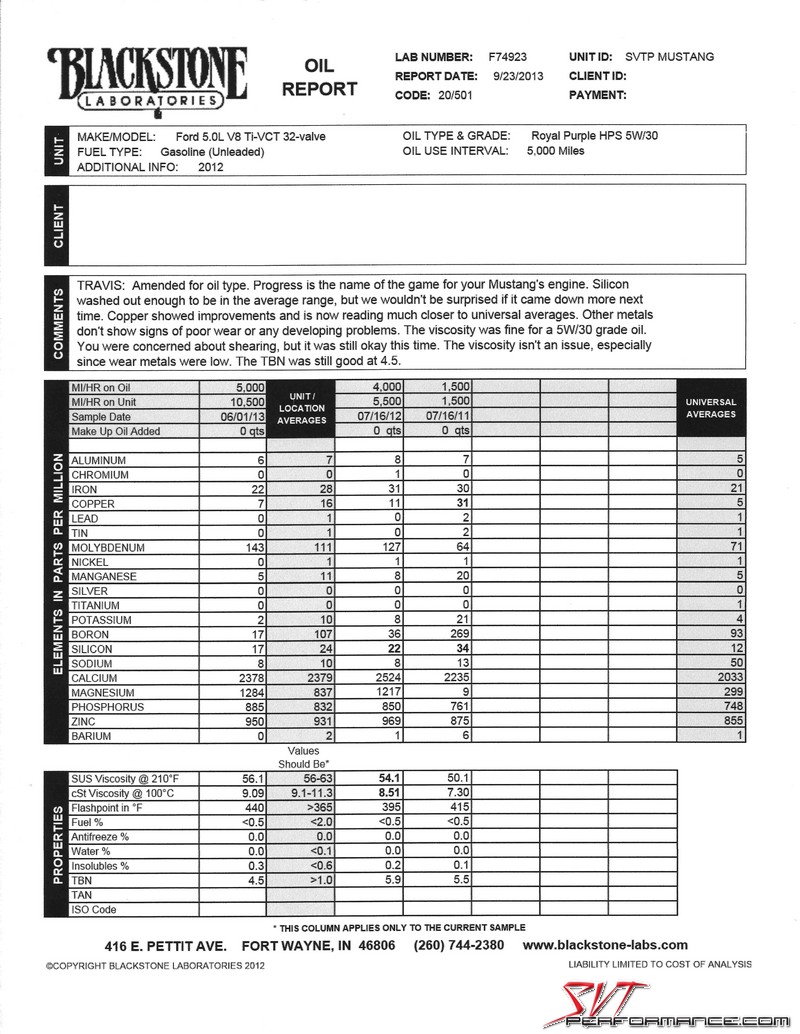UnleashedBeast
Engine Lubrication Guru
A UOA will only reveal the base oil used if oxidation is tested. Not all labs perform that test. OAI does, a.k.a. Polaris Labs.
5W-20 engine survivals in the past 10+ years is more reason to understand that thicker isn't better. On BITOG forums, I learned a phrase that meant a lot.
"Thin as possible, thick as necessary."
A doctor tested oil pressure in his Ferrari, all the way down to daily driving with 5W-20. His car is recommended for 5W-40 on the street, and 10W-60 on the track. Oil pressure testing proved that daily driving duties required nothing more than a robust 5W-20.
Dr. Haas - Ferrari chat
Motor oil 108 is a great section.
"One of the members of the Ferrari Chat web site went from a 40 to a 30 grade oil in his Ferrari 355 for racing in Texas. He noticed a drop in temperature but no change in oil pressure. This may seem odd but really makes perfect sense. Since the 30 grade oil is thinner he got better flow and therefore better cooling. The oil was at a lower temperature so it was not as thin than it would have been at the previous higher temperature. Cooler engines last longer. Fact: The higher the temperature, the greater the wear, all other things being equal."
"If you are using XW-50, go to a 0W-40. If your pressures are still too high go to a 0W-30 and so on."
"When I took delivery of my 575 Maranello I drove for 500 miles then changed the oil to 0W-30 Mobil 1. There were no changes in operating pressure or temperature. Starting the engine seemed faster though. I called up FNA and was told that all new Ferrari Maranellos are delivered with 5W-30 Shell Helix Ultra. That is when I decided to try the 0W-20 Mobil 1. I could have gone to a 10 grade oil as my pressures were still excessive while driving around town. I do not drive on the track."
5W-20 engine survivals in the past 10+ years is more reason to understand that thicker isn't better. On BITOG forums, I learned a phrase that meant a lot.
"Thin as possible, thick as necessary."
A doctor tested oil pressure in his Ferrari, all the way down to daily driving with 5W-20. His car is recommended for 5W-40 on the street, and 10W-60 on the track. Oil pressure testing proved that daily driving duties required nothing more than a robust 5W-20.
Dr. Haas - Ferrari chat
Motor oil 108 is a great section.
"One of the members of the Ferrari Chat web site went from a 40 to a 30 grade oil in his Ferrari 355 for racing in Texas. He noticed a drop in temperature but no change in oil pressure. This may seem odd but really makes perfect sense. Since the 30 grade oil is thinner he got better flow and therefore better cooling. The oil was at a lower temperature so it was not as thin than it would have been at the previous higher temperature. Cooler engines last longer. Fact: The higher the temperature, the greater the wear, all other things being equal."
"If you are using XW-50, go to a 0W-40. If your pressures are still too high go to a 0W-30 and so on."
"When I took delivery of my 575 Maranello I drove for 500 miles then changed the oil to 0W-30 Mobil 1. There were no changes in operating pressure or temperature. Starting the engine seemed faster though. I called up FNA and was told that all new Ferrari Maranellos are delivered with 5W-30 Shell Helix Ultra. That is when I decided to try the 0W-20 Mobil 1. I could have gone to a 10 grade oil as my pressures were still excessive while driving around town. I do not drive on the track."
Last edited:



